You are here
Federal Deficit and Debt: July 2020
Every month the U.S. Treasury releases data on the federal budget, including the current deficit. The following contains budget data for July 2020, which was the tenth month of fiscal year (FY) 2020.
Current Federal Deficit
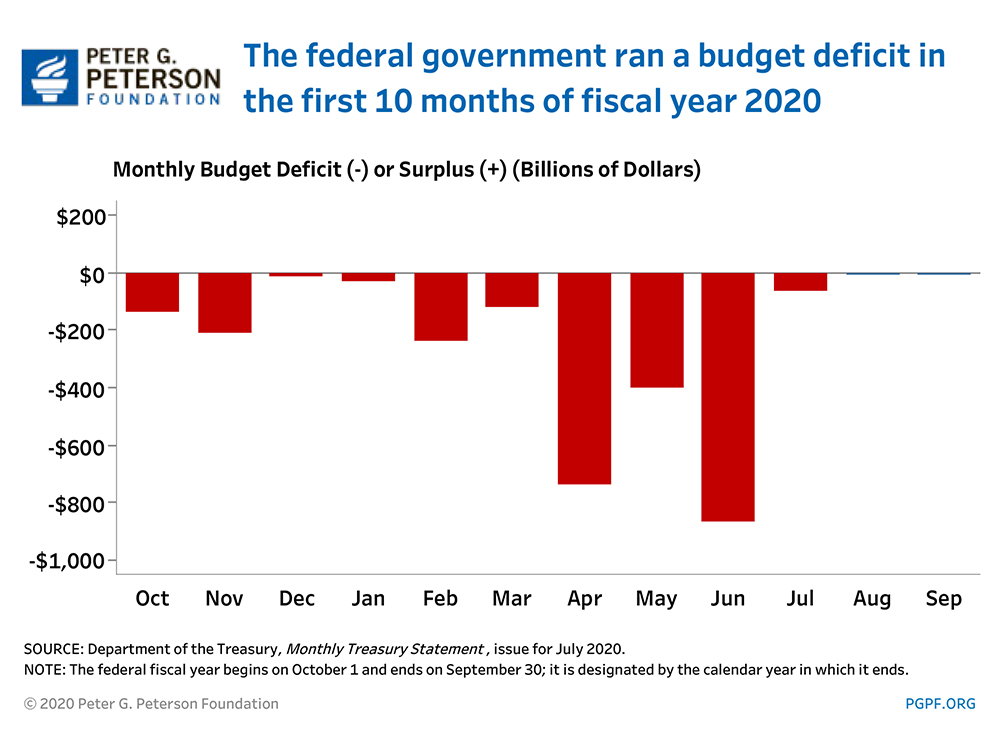
- Federal Budget Deficit for July 2020: $63 billion
- Federal Budget Deficit for July 2019: $120 billion
The deficit for July 2020 was $57 billion smaller than the deficit recorded in July 2019. That decline resulted from the deferral of deadlines for payment of individual and corporate taxes from earlier in the year to July; the $563 billion collected last month set an all-time record for monthly receipts. Spending was nearly 70 percent higher in July 2020 than it was in July 2019, which offset a large portion of the increase in revenues.
The decrease in the July deficit would have been even larger if not for shifts in the timing of certain federal payments. Because August 1 fell on a weekend, $57 billion of federal payments were shifted into July. Without those shifts, the July 2020 deficit would have been $114 billion smaller than the deficit in July 2019.
Cumulative Federal Deficit
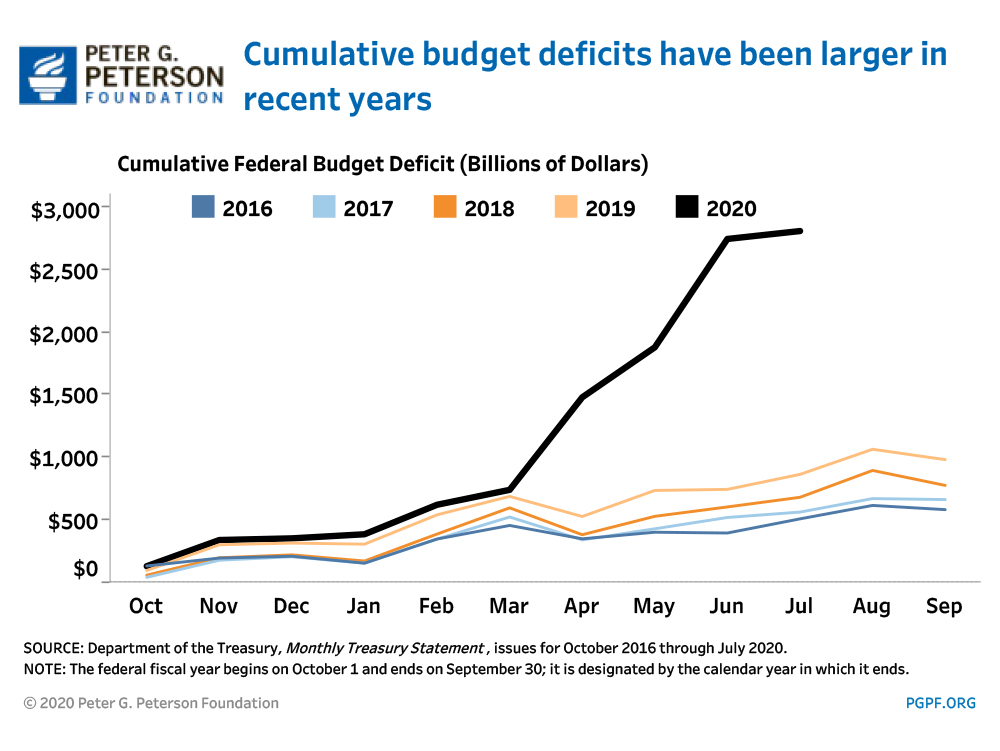
- Cumulative FY20 Deficit through July 2020: $2,807 billion
- Cumulative Budget Deficit over same period in FY19: $867 billion
The cumulative deficit through the first 10 months of FY20 was $1,940 billion larger than it was through the first 10 months of FY19. The increase in the cumulative deficit reflects a $1,904 billion increase in outlays and a $37 billion decrease in revenues.
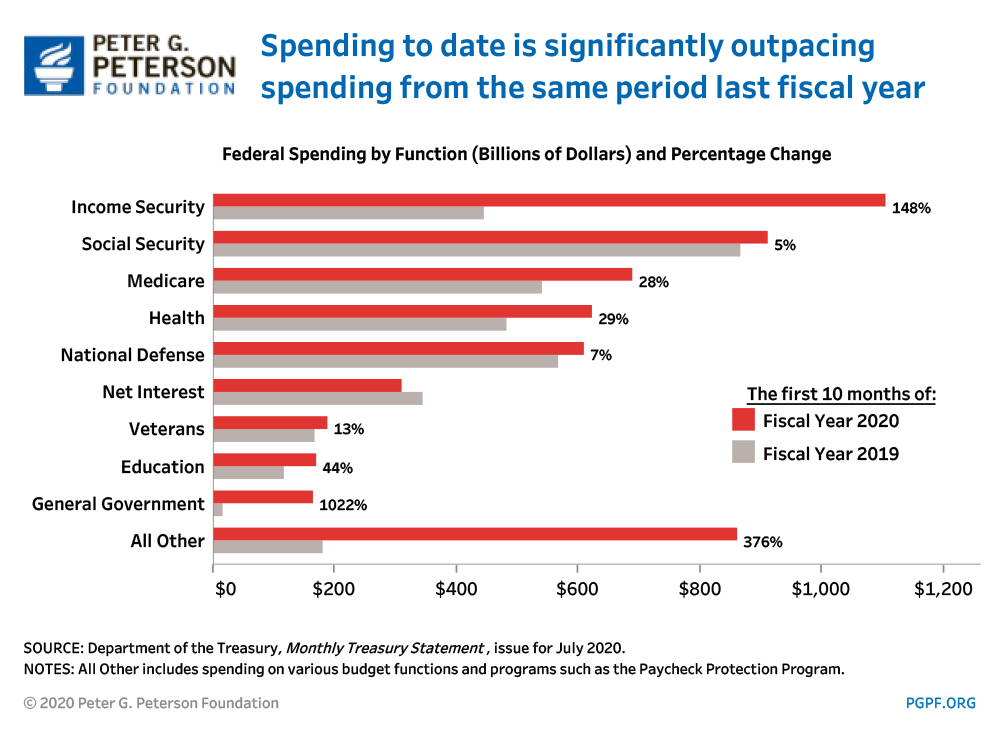
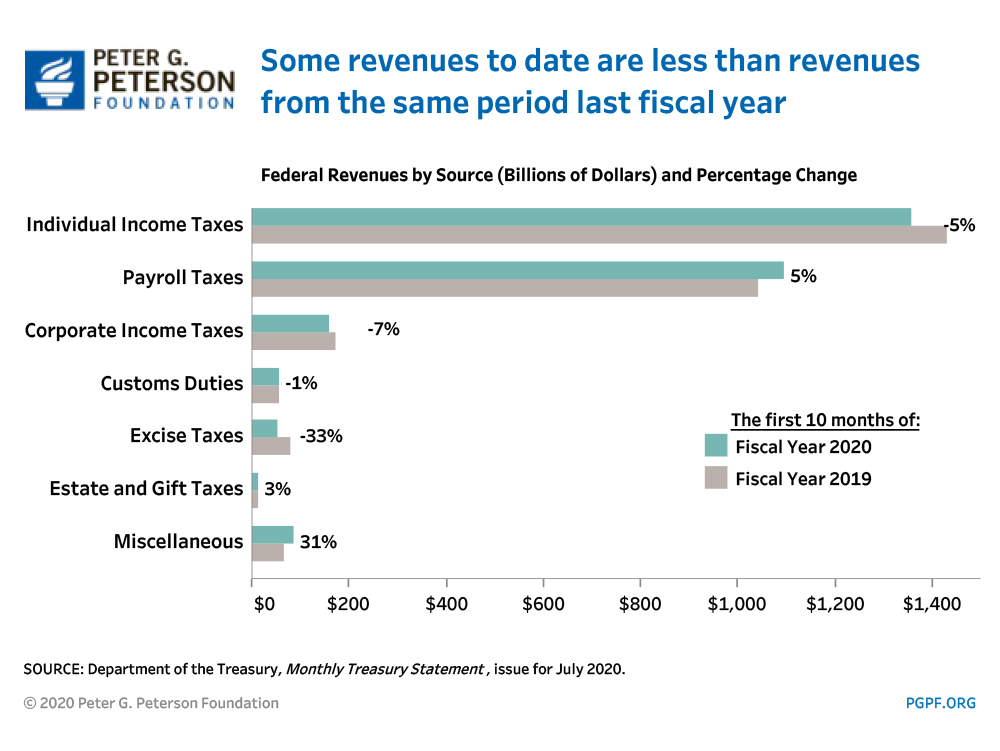
National Debt
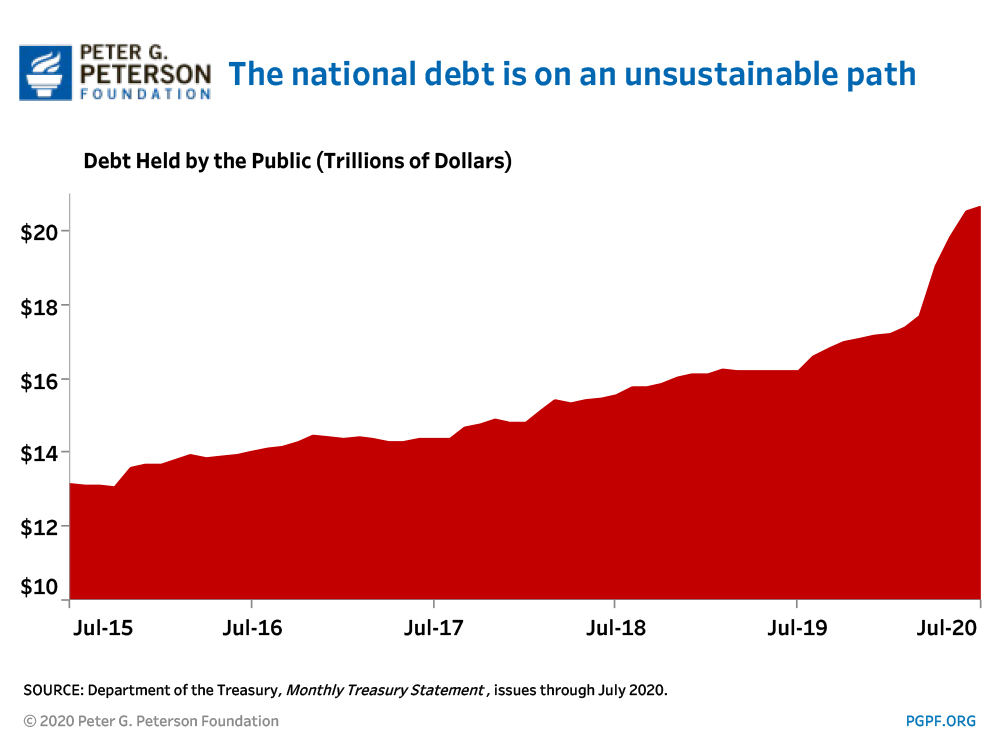
- Debt Held by the Public at the end of July 2020: $20.6 trillion
- Debt Held by the Public through July 2019: $16.2 trillion
The deficit varies from month to month and some months may even record a surplus – for example, when taxpayers are submitting their personal income taxes at the filing deadline. The recent increases in debt reflect the effects of the pandemic and the government’s decision to support those who were negatively affected by the closure of much of our economy to prevent the spread of COVID-19. Once the situation has stabilized, focus needs to return to the country’s underlying fiscal situation.
